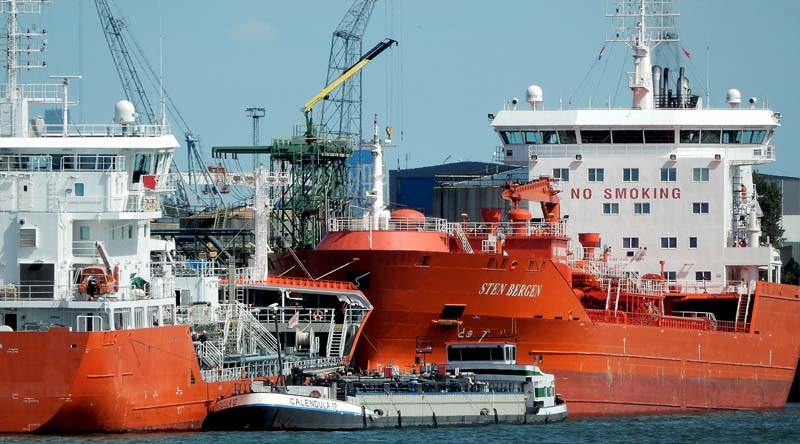With NNPC Correspondents and the NNPC active throughout the Netherlands and European waterways, we have a broad experience with personal injury claims. In the dynamic world of inland shipping in the Netherlands, we appreciate that shipowners face significant challenges in ensuring the safety of their crews and vessels and dealing with incidents and claims when they arise. The potential for injury and death cases looms large, with costly consequences for human lives, business operations, and financial stability. Proactive claims handling and risk management is not just a legal requirement but a critical strategy to safeguard employees, protect assets, and maintain operational continuity. This article explores the key risks, statutory obligations like the Risk Inventory and Evaluation (RI&E – Risico Inventarisatie en Evaluatie), and steps shipowners can take to minimize incidents on Dutch inland waterways and to comply with local requirements.
numerous ship movements
With the busy water ways in the Netherlands and the thousands of ship movements every year, the Netherlands is a unique jurisdiction for personal injury injuries. In additional to the usual slips, trips, and falls on wet decks, injuries from heavy machinery, collisions with other vessels, and even exposure to hazardous substances during cargo handling can result in traffic consequences. These incidents not only devastate families but also lead to substantial financial losses through legal claims, downtime, repairs, and reputational damage. For shipowners, preventing such outcomes is both a moral and business imperative.
working conditions act (Arbowet)
The Netherlands enforces strict regulations under the Working Conditions Act (Arbowet) to ensure safe workplaces, including on inland vessels. Compliance is non-negotiable, with the Netherlands Labour Authority (NLA) actively inspecting vessels for compliance. Below are the key legal requirements shipowners must meet to mitigate risks effectively.
1. Risk Inventory and Evaluation (RI&E)
The RI&E is a mandatory tool for all employers with staff, including shipowners operating inland vessels, as stipulated in Article 5 of the working conditions act (Arbowet). This comprehensive assessment identifies and evaluates all health and safety risks onboard, covering both physical and psychosocial hazards. For inland vessels, an RI&E should address:
a. Physical risks: Slips on deck, falls from heights (e.g. during mooring), injuries from winches or cranes, noise exposure, and fire hazards.
b. Ergonomic risks: Repetitive strain from manual tasks or poor workstation design.
c. Chemical risks: Exposure to fuels, lubricants, or cargo-related substances.
d. Psychosocial risks: Stress from long working hours, isolation, or workplace conflicts.
2. The RI&E process involves:
a. Risk identification: Documenting all potential hazards specific to the vessel’s operations.
b. Risk assessment: Evaluating the likelihood and severity of each hazard.
c. Action Plan (Plan van Aanpak): A mandatory component outlining measures to eliminate or reduce risks, timelines for implementation, and responsible parties.

continuous attention required
Shipowners must ensure the RI&E is accessible to crew members and updated whenever operational changes occur, such as new equipment or routes. For companies with more than 25 employees, the RI&E must be reviewed by a certified occupational health and safety expert. Smaller operators using a sector-approved RI&E tool may be exempt from this review. Non-compliance can result in warnings, fines, or orders to suspend operations.
3. Appointment of a Prevention Officer: Shipowners must designate a prevention officer to oversee health and safety tasks, including drafting and executing the RI&E. On smaller vessels, the shipowner or captain often assumes this role. The prevention officer ensures crew awareness of risks and adherence to safety protocols.
4. Crew Training and Information: The working conditions act requires shipowners to provide regular training on safety procedures, emergency response, and hazard awareness. Crews must be informed about the RI&E findings and the measures in place to protect them. This includes training on life-saving equipment, fire suppression systems, and safe cargo handling.
5. Incident Reporting and Investigation: Shipowners are obligated to report serious workplace accidents, injuries, and fatalities to the Netherlands Labour Authority immediately. Thorough investigations must follow to identify root causes and prevent recurrence. Maintaining an incident log helps track patterns and informs updates to the RI&E.
6. Partner with Experts: Engage experienced correspondents, like NNPC Correspondents, to conduct independent safety audits or assist with RI&E compliance and to respond to any incidents on board.
summary
In summary, shipowners should ensure that they are compliant with the Dutch statutory requirements when trading in Dutch waters. The Netherlands Labour Authority reported increased inspections in 2024, with fines being imposed for non-compliance. When incidents do occur reach out to us as quickly as possible so we can assist to gather evidence, investigate the incident and protect the interests of the shipowners. By taking proactive measures to ensure compliance and respond to incidents when they arise, shipowners and prevent and otherwise mitigate the impact of personal injury incidents in the Netherlands.

